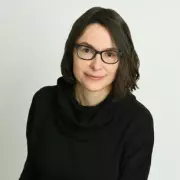– Europe/Lisbon
Online

Quantum groups in the digital setting
The main idea behind noncommutative geometry is to “algebralize” geometric notions and then generalize them to noncommutative algebras. This way noncommutative geometry offers a generalised notion of the geometry. Quantum groups or Hopf algebras play the role of ‘group objects’ in noncommutative geometry and they provide an approach to the development of the theory much as Lie groups do in differential geometry.
I will give an introduction to the topic and briefly mention results on classification of all bialgebras and Hopf algebras of dimension ≤ 4 over the field $F_2 = \{0, 1\}$. These results can be summarized as a quiver, where the vertices are the inequivalent algebras and there is an arrow for each inequivalent bialgebra or Hopf algebra built from the algebra at the source of the arrow and the dual of the algebra at the target of the arrow. There are 314 distinct bialgebras and, among them, 25 Hopf algebras, with at most one of these from one vertex to another. We found a unique smallest noncommutative and noncocommutative quantum group, which is moreover self-dual and resembles a digital version of $u_q(\operatorname{sl}_2)$.